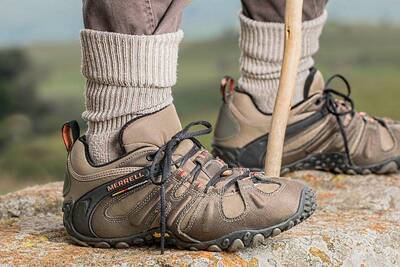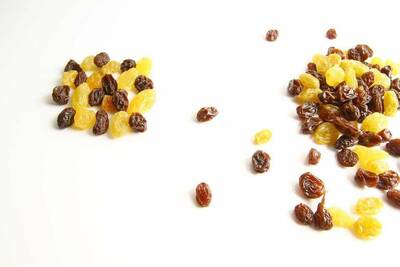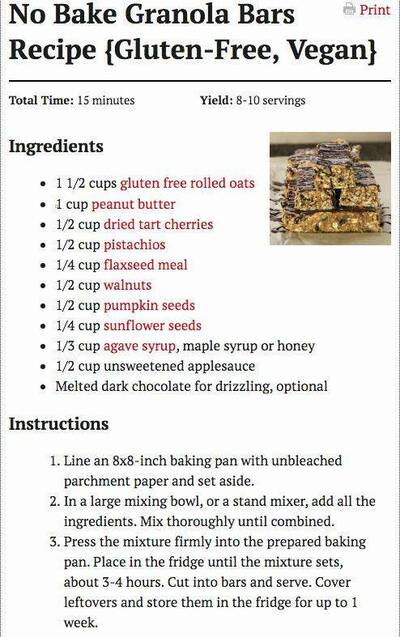Backpackers.com — The act of thru-hiking is associated with serious hikers traveling serious distances on foot. Thru-hiking means to hike through the entirety of a trail, though nobody in the outdoor industry is obsessed with the term's rules.
A large barrier to thru-hiking, or long distance hikes in general, is the food. Even the food eaten when backpacking and camping has drawbacks for people who don't do it often. The reality is that you'll need a specific kind of thru-hiking nutrition, the foundation of which applies to all outdoor excursions.
We worked in collaboration with Nuts.com on a scientific and food-based guide for thru-hiking nutrition. If you've never done a thru-hike before, absorb the information and apply to regular hiking. If you're gearing up for the next big trail, make sure you have a handle on what kind of food you'll need to keep yourself fit and happy.
You'll find a recipe at the end of the article as well, courtesy of Nuts.com!

Off the Beaten Path: A Primer to Thru-Hiking Nutrition
You’ve made the decision to undertake the grueling trek across the 2,180 miles of the Appalachian Trail. Or the John Muir Trail. Or the Pacific Crest Trail. Or the countless other hundred-plus mile trails that snake along the North American backcountry and all over the world.
Now it’s time to plan. There are a number of things you have to consider: base weight, specialized gear, durable clothing, inclement weather, and gnarly terrain. The trick here is to minimize the variables by being prepared and knowing what you’re in for. Luckily for you, there’s a large community of people who’ve done it before and they’ve gone to great lengths to save you some time and effort. Nothing about this is going to be easy, so every little bit of thoughtful planning counts.
One often glossed over subject is nutrition. Thru-hiking is a unique athletic endeavor and it presents your body with different demands than you might think. It's nothing like maxing out in the weight room or training for a marathon. Hiking by nature, and thru-hiking especially, isn’t a high-intensity workout, but it does require extreme amounts of endurance.
Weight Loss and Macronutrients
Many thru-hikers experience a significant amount of fat and muscle loss, which is indicative many things. Carrying weight for that many days on end will make anyone lose weight, but many thru-hikers lose too much weight. This signals a lack of proper nutrition and often goes hand-in-hand with a lapse in energy. While losing fat can be seen as a benefit of thru-hiking, muscle loss is troubling because that means you’re not getting enough protein in your diet, and won't actually be as strong or healthy during the hike as you could be, or after.
Your body can turn to three macronutrients as sources of energy: carbohydrates, fats, and proteins. Because hiking is a characteristically low to moderate intensity exercise, fats play a slightly larger role in fueling your muscles. This is different from something like Crossfit or resistance training, where you’d rely more heavily on carbohydrates in the form of glycogen. When your body depletes its glycogen and fat stores, it will start to break down and burn amino acids (proteins) for energy. It’s easy to put two and two together here — since your muscles are made of protein it follows that they'll start to break down if there's not enough fats and carbohydrates around.
Conversely, replenishing protein will help facilitate the rebuilding of muscle fiber that experiences small tears over the duration of strenuous physical exertion. The physical demands of thru-hiking can be most likened to that of an Ironman participant or an ultra-marathon runner. It is an endurance exercise, so you should plan to fuel like you’re an endurance athlete.

The Food Plan
While all of this is true for those about to embark on a thru-hike, you will have to train and begin in moderate steps. Using the following foods on smaller hikes to build up your routine is important to establish what you like, what sits well, and how it all feels on your back. The main issues with food on a thru-hike (or backpacking in general) are how much it weighs and how long it will keep.
Most thru-hikes last weeks or months. Each day will present its own set of challenges like different lengths of travel, elevation, and exertion (not to mention wildlife and mental exhaustion). There’s really no single diet plan that fits comfortably within the framework of a thru-hike. This is because you're constantly going to run out of food, get more food, and eat in towns along the way. That said, a good rule of thumb when planning out your nutritional needs is to make about half of your daily calorie intake carbohydrates, then split the other half split between proteins and fats, with the scale favoring fats.
A good ratio laid out on Thru-Hiker is 50% carbohydrates, 35% calories from fats, and 15% calories from proteins. This means a lot of food items that you would not be able to consume in the normal world, because normally you're not hiking 15-25 miles a day with a pack on your back.
This is done in a number of ways. The most common for dedicated thru-hikers is a huge assortment of gels, protein bars, dense food packets with protein, pasta dishes, and specialty foods (like margarin) that contain high amounts of a single type of nutritional boost. This is often supplemented by massive meals in town.

For the bare essentials thru-hiker, the above is common. Another big question is whether or not you'll bring a stove. Most people do, but those that don't need food that is ready to eat as-is, meaning even more gels, protein bars, food packets, and on-hand items. If you do have a stove, your options open up more.
Nutrient Rich Snacks
One great debate in the thru-hiking world, and hiking in general, is how much junk food you should or shouldn't eat. Often junk food has a ton of carbohydrates and fats, but they often aren't the kind that will give your body the full value it needs day after day.
If you can pay for it and carry it, your diet should consist of mostly whole foods. For example, eating a nutrient-rich snack like trail mix will provide your body with healthy proteins, fats, and carbohydrates from the fruits and nuts, which also carry the added benefit of helping to hydrate your body.
It would also be worthwhile to do some research on superfoods. Adding something like a scoop of spirulina to a bag of granola will provide a significant nutrient boost. Adventurous Habits has a great list of unique superfoods specifically for thru-hiking and backpacking, each of which can be supplemented to your usual food. You can also buy or make energy squares that have a shelf life of up to six months and can be packed with essential macronutrients, taking up a very economical amount of space.
Superfoods, whole foods, and generally good nutrition can get expensive. And that's without talking about the freeze-dried meals, which are packed full of all the nutrition you'll need, but cost a good chunk of change. This is where the real research starts. After you know the general parameters, start to dig into the lightest, cheapest version of these foods that still pack a nutritional punch.
Granola Recipe
To get you started on your journey, check out this no-bake nutrient dense granola recipe that keeps for up to three months sealed in an airtight container. It's a bit like lembas bread:

Remember to plan your thru-hiking nutrition and take it out for multiple tests before you embark. Be open to swapping out items as the climate changes, and do your best to satisfy that hunger.
All images open source.
